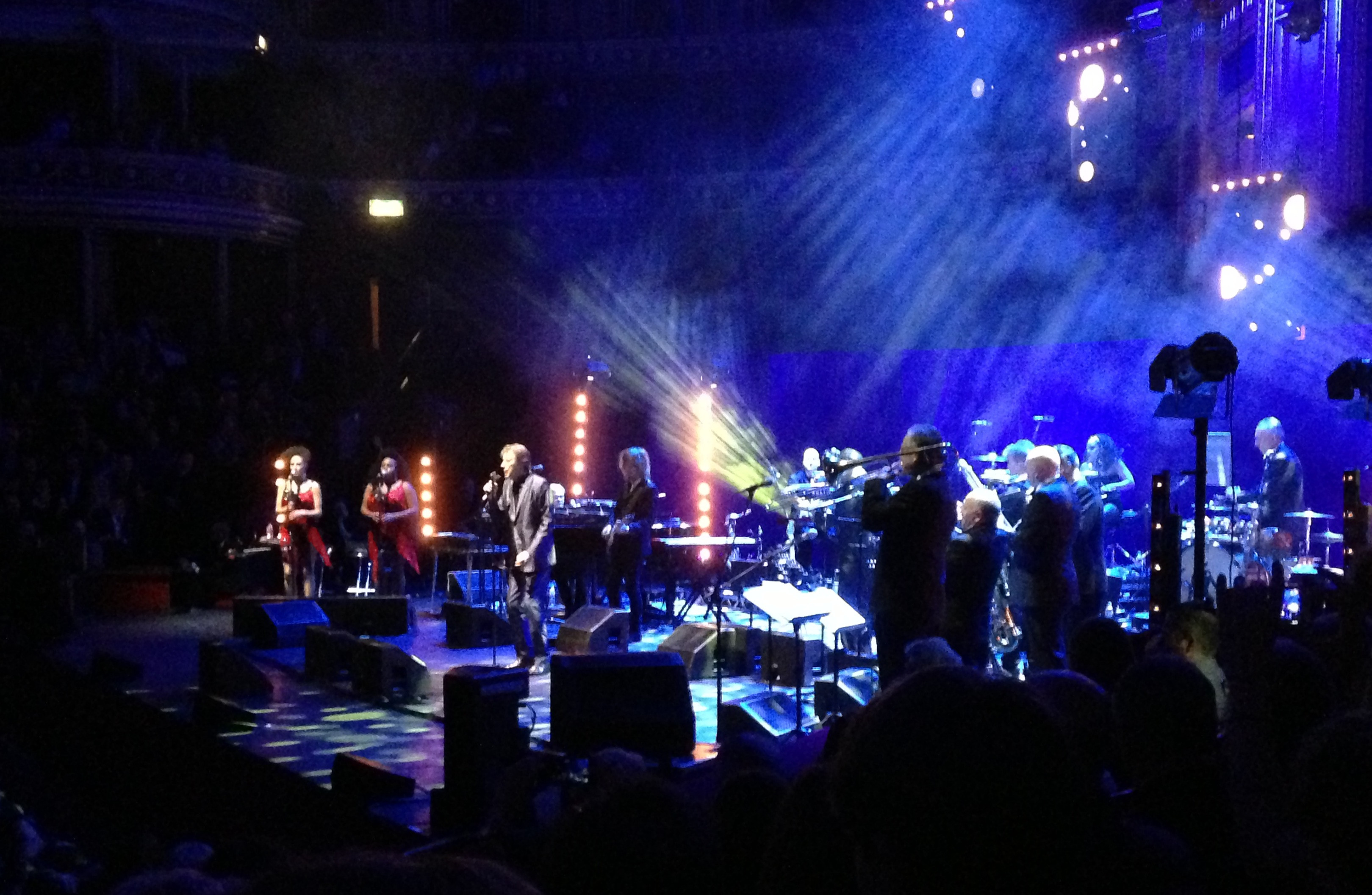Bryan Ferry’s recent tour, including his performance at the Albert Hall, is a bold step for an artist of his stature. Far from simply revisiting past glories, Ferry offers his audience a richer and more innovative experience.
The concert begins unconventionally with the nine-piece Bryan Ferry Orchestra. This ensemble, known for their instrumental reinterpretations of Roxy Music classics in the style of 1920s jazz icons like Jelly Roll Morton and Duke Ellington, as featured on The Jazz Age and in The Great Gatsby soundtrack, sets a unique tone. The stage is filled with instruments evocative of the Roaring Twenties – a banjo, a bass saxophone, various clarinets, a string bass, and vintage drums. Under the direction of Colin Good, Ferry’s musical director, and with standout performances from musicians like trumpeter Enrico Tomasso, the orchestra’s renditions are far from mere imitation, demonstrating a deep understanding and appreciation of the jazz idiom.
For some concertgoers, the radical transformations of beloved hits like “Avalon,” “Slave to Love,” “The Bogus Man,” and “Do the Strand” might come as a surprise. These songs, reimagined in a vintage jazz style, require a period of adjustment before Bryan Ferry himself graces the stage. His entrance is marked by a performance of “The Way You Look Tonight,” accompanied by two backing vocalists. “Reason or Rhyme” initially follows in the same vein, but a dramatic shift occurs mid-song with the arrival of Cherisse Ofosu-Osei behind a second drum kit and Oliver Thompson with his Gibson Les Paul. This signals a sudden leap from the past to the present day, injecting contemporary energy into the performance.
 Bryan Ferry performing live, dancing to the music of his songs during his Albert Hall performance, highlighting his musical evolution over time.
Bryan Ferry performing live, dancing to the music of his songs during his Albert Hall performance, highlighting his musical evolution over time.
From this moment onwards, the concert’s momentum escalates, largely fueled by Ofosu-Osei’s powerful drumming. Her intense and unwavering drumming style brings a modern edge, contrasting sharply with the expected rhythms. Ferry’s artistic choices remain daring. He is clearly determined to perform the music he is passionate about and wants his audience to experience in a fresh light. A significant part of the concert’s appeal lies in witnessing how Ferry and Good expertly utilize their resources to revitalize familiar material. Martin Wheatley’s transitions between banjo, guitar, and mandolin add layers of texture, particularly in a delicate rendition of “Carrickfergus.” John Sutton’s percussive contributions complement Ofuso-Osei’s powerful drumming, while Tomasso and Iain Dixon inject a burst of Dizzy Gillespie and Charlie Parker-inspired energy into “Au Privave,” leading into “N.Y.C.” from Ferry’s Mamouna album. The inclusion of a bass saxophone is also cleverly exploited, notably in “Editions of You,” adding depth and richness to the sound.
Dylan’s songbook is also explored throughout the set, featuring a poignant voice-and-piano arrangement of “Don’t Think Twice, It’s All Right.” Furthermore, a rendition of “Shame, Shame, Shame” cleverly incorporates a chorus of “Can I Get a Witness” by the backing singers. This witty and fitting addition demonstrates a genuine appreciation and deep-rooted understanding of R&B traditions.
Ultimately, the most compelling aspect of the concert is its focus on the music itself, rather than image or nostalgia. Ferry appears to embrace a Dylan-esque perspective on time, blurring the lines between past and present. This performance serves as compelling evidence that this approach is not only working for Ferry artistically but also resonating deeply with his audience, offering a captivating dance to the music that spans time itself.
